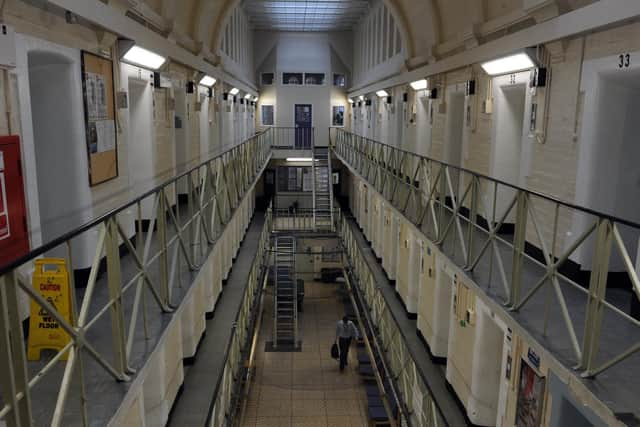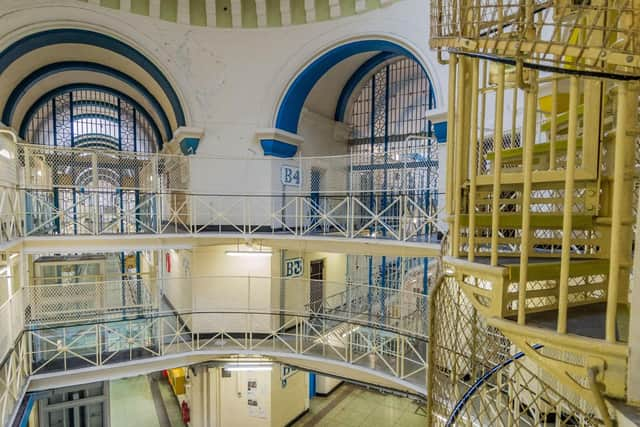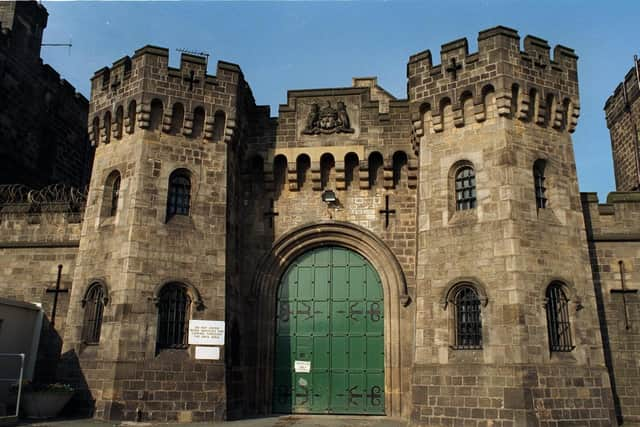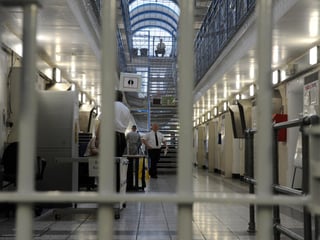Overcrowded Leeds prison less violent but self-harm too high says inspector
and live on Freeview channel 276
Inspectors found HMP Leeds had become less violent and more respectful since their last visit in 2017, but there was evidence of staff using excessive force and incidents of self-harm were much higher than in similar prisons.
The Category B men's jail, which holds up to 1,131 prisoners from across West Yorkshire, is the fifth worst prison in England and Wales for overcrowding based on the latest statistics.


Advertisement
Hide AdAdvertisement
Hide AdIt was also named one of the 10 most troubled prisons when the Government announced a multi-million pound blitz on drugs and violence in August 2018.
During a visit the previous year, inspectors had found the prison was unsafe and was failing to achieve good enough outcomes in the healthy prison tests for respect and purposeful activity rehabilitation. Outcomes for rehabilitation and release planning were better.
The findings of the latest report, published today, were based on an unannounced inspection in November and December 2019.
Peter Clarke, HM Chief Inspector of Prisons, said: “At this inspection it was true to say that Leeds continued to face many significant challenges, but we found a generally competent institution where improvement was evident in many areas. This was particularly true of safety, which was now much better, although much remained to be done.”


Advertisement
Hide AdAdvertisement
Hide AdRespect had improved to an assessment of reasonably good, while assessments in purposeful and work around rehabilitation and release planning had both improved.
A body scanner in reception was proving effective in detecting contraband and the availability of illicit drugs had reduced.
Levels of violence had also reduced and serious violence had gone down considerably, although more than a third of prisoners said they felt unsafe and intimidated by staff.
Prisoners suggested that the use of force by staff was sometimes excessive and inspectors found evidence to support their view.


Advertisement
Hide AdAdvertisement
Hide AdThe report notes there had been eight self-inflicted deaths since 2017 and several other deaths were under investigation.
It found the case management of those in crisis was not good enough, despite recommendations made by the Prisons and Probation Ombudsman following her investigation into some of these deaths.
Also in crime: 'Your health is my priority' says Leeds Crown Court judge to jury as murder trial halted
The number of incidents of self-harm was also much higher than in similar prisons.
Advertisement
Hide AdAdvertisement
Hide AdMr Clarke said: “We found that the prison’s safeguarding strategy was not sufficiently effective in addressing emerging issues or risks, or the needs of individuals in crisis.”
Inspectors generally observed good and relaxed staff-prisoner relationships. Cramped living conditions were prevalent, but were mitigated slightly by a proactive and effective approach to upholding standards, including cleanliness, as well as to providing cell equipment and access to basic amenities.
Time out of cell varied greatly from about nine hours a day for a fully employed prisoner to as little as two hours for those unemployed and subject to a basic regime.
The daily routine was reasonably predictable but inspectors still found 40 per cent of prisoners locked in cell during the working day.
Advertisement
Hide AdAdvertisement
Hide AdThere were too few activity places in work and education, and those that were available were not always filled.
Despite some weaknesses, including some mixed outcomes in public protection arrangements, prisoners generally received good resettlement planning and support.
Around a fifth of prisoners at Leeds were on remand awaiting trial or sentencing when inspectors visited and many spend short periods there before being transferred elsewhere, meaning there is a significant turnover in population each week.
Summarising the findings, Mr Clarke said: “It is right to acknowledge again the challenges in running a prison like Leeds. The level of need among prisoners was great, the environment required constant work and attention in order that minimum standards could be maintained, and the operational context required real grip.
Advertisement
Hide AdAdvertisement
Hide Ad"Overall, though, we were encouraged by what we saw. Leeds could not yet be described as cultivating a rehabilitative culture as aspired to by HM Prison and Probation Service, but we could see some very important work being done and improvements were evident. The Governor and his team deserve acknowledgement for what they have achieved so far."
He said priorities should now include further improvements in safety outcomes, notably safeguarding those at risk of self-harm, and getting prisoners out of their cells and into purposeful activity with greater consistency.
Phil Copple, Director General of Prisons, said: “I am hugely grateful to the Governor and staff at Leeds for their commitment and hard work making Leeds a safer prison – and I’m pleased that work has been recognised.
“Extra training has been given to officers to help the most vulnerable, and prisoners have more opportunities to get out of their cells to learn new skills and do work ahead of release.”
